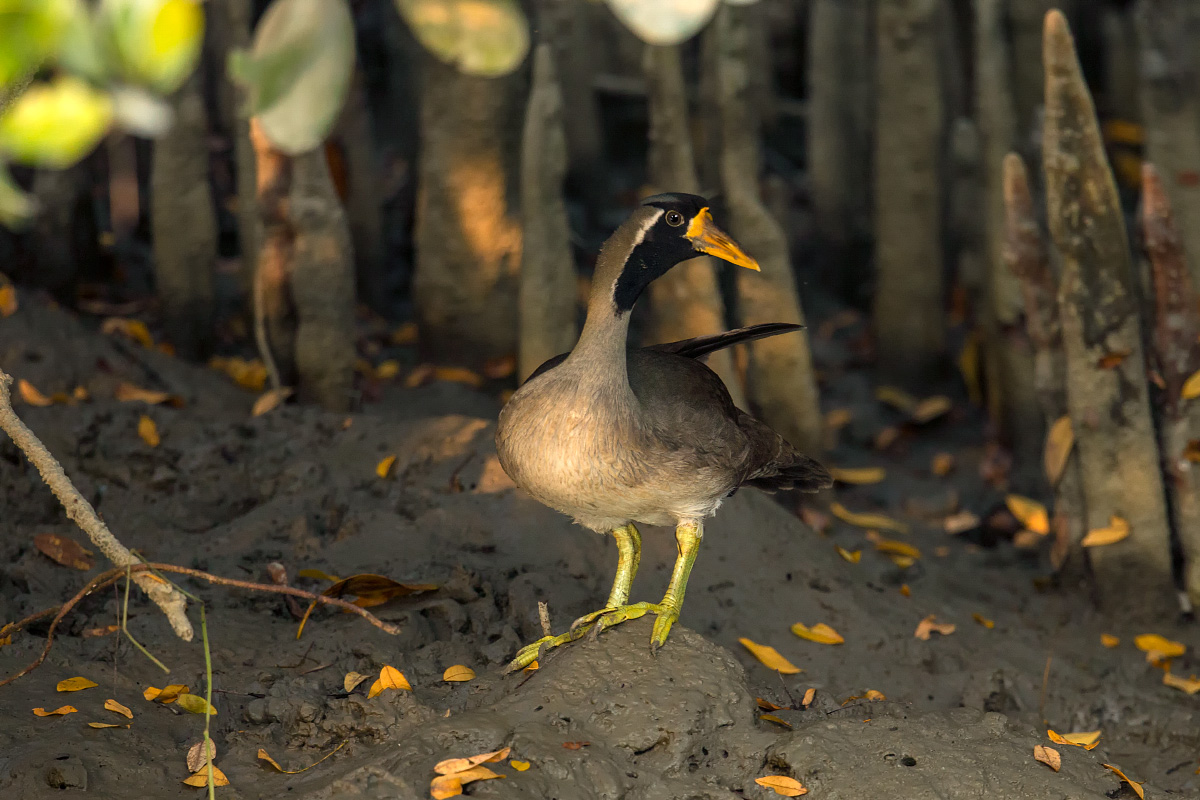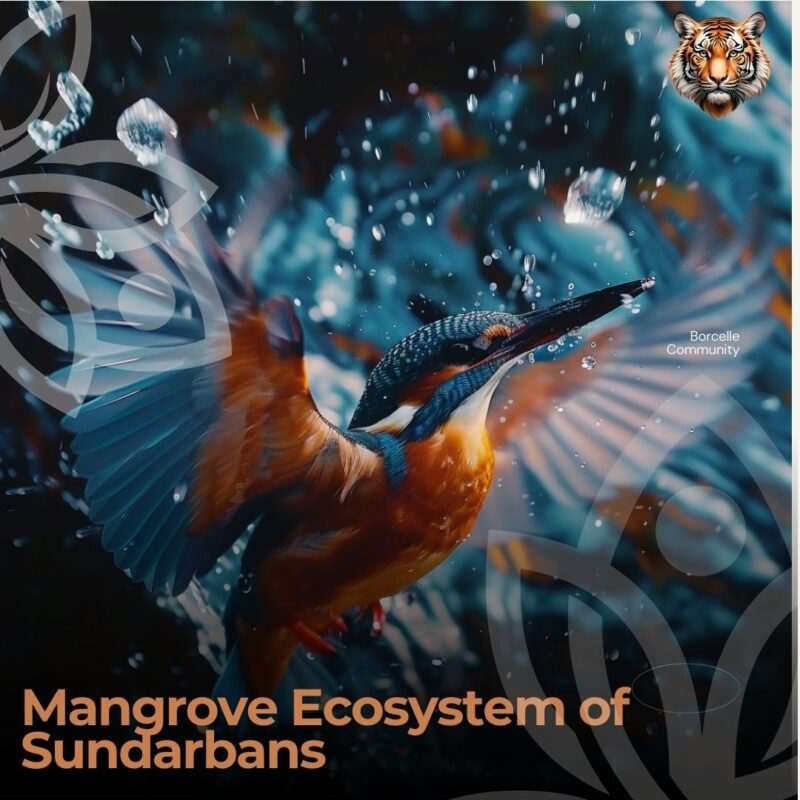- 1 Day Sundarban Tour
Pricing:
- ₹2799 per adult
- ₹1399 for children aged 4-8 years
- Free for children aged 1-4 years (under 48 months)
Facilities Included:
- Welcome Drink:
- Transportation: [Pick + Drop]
- Breakfast:
- Boat Safari:
- Lunch:
- Sightseeing:
- Guide Assistance:
- Snacks and Tea:
- Safety Measures:
- 1 Night 2 Days Sundarban Tour
Pricing:
- ₹4500 per adult (Non-AC room)
- ₹5000 per adult (AC room)
- ₹2250 for children aged 4-8 years
- Free for children aged 1-4 years (under 48 months)
Facilities Included:
- Welcome Drink
- Meals: All Times
- Boat Safari
- Accommodation: AC/ Non Ac
- Cultural Program:
- Visit Watchtowers and Local Attractions
- Safety
- Guided Tour
- Tea/Coffee Breaks
- 2 Night 3 Days Sundarban Tour
Pricing:
- ₹5500 per adult (Non-AC room)
- ₹6500 per adult (AC room)
- ₹2750 for children aged 4-8 years
- Free for children aged 1-4 years (under 48 months)
Facilities Included:
- Welcome Drink
- Meals: (breakfast, lunch, evening snacks, and dinner)
- Extended Boat Safaris: Multiple guided boat safaris
- Accommodation: in AC or non-AC rooms,
- Cultural Program:
- Visits to Key Attractions:
- Expert Guide:
- Tea/Coffee Breaks:

Sundarban 3 Days 2 Nights Package
Immerse in the wild beauty of Sundarbans with our 3 Days, 2 Nights adventure!

Book Sundarban 3 Days 2 Nights
Immerse in the wild beauty of Sundarbans with our 3 Days, 2 Nights adventure!
- 2 Night 3 Days Sundarban Boat Tour
Pricing:
- ₹5500 per adult (Non-AC room)
- ₹6500 per adult (AC room)
- ₹2750 for children aged 4-8 years
- Free for children aged 1-4 years (under 48 months)
Facilities Included:
- All Meals:
- Guided Boat Safaris:
- 2-Night Accommodation: Stay on the boat in comfortable AC or non-AC rooms.
- Cultural Performances:
- Attractions:
- Safety & Security:

Boat Sundarban 3 Days 2 Nights Package
Sail into the wild with our 3 Days, 2 Nights Sundarban Boat Adventure!

Sundarban 3 Days 2 Nights Package
Explore the untamed beauty of Sundarbans with a thrilling 3 Days, 2 Nights boat tour!
Bird Watching in Sundarbans: Top Species to Look For

Bird Watching in Sundarbans: The Sundarbans, with its sprawling mangrove forests, tidal waterways, and marshes, is not only famous for its tigers but also for its rich avian diversity. This intricate ecosystem supports over 300 species of birds, making it a paradise for bird watchers. Whether you’re a novice or an experienced birder, the Sundarbans offers unparalleled opportunities to observe both common and rare bird species, some of which are unique to the mangrove habitat. Let’s dive deeper into Bird Watching in Sundarbans.

In this blog, we’ll explore the top species you should keep an eye out for during your bird-watching adventure in the Sundarbans.
Bird Watching in Sundarbans Important Points
1. Lesser Adjutant Stork (Leptoptilos javanicus)
The Lesser Adjutant Stork is one of the most distinctive birds you’ll encounter in the Sundarbans. Recognizable by its bare head, long legs, and large stature, this bird primarily inhabits wetlands and tidal areas. These storks are often found wading through shallow waters, hunting for fish, frogs, and insects.

While they may not be the most aesthetically pleasing birds due to their somewhat vulture-like appearance, their role as scavengers is crucial to maintaining the ecosystem’s health. This species is classified as vulnerable due to habitat loss, so spotting one in the Sundarbans is a special experience. Also, you can Book the Sundarban Tour At Royal Sundarban Tourism and Sundarban Leisure Tourism Powered By Argusdna.
2. Brown-winged Kingfisher (Pelargopsis amauroptera)
The Brown-winged Kingfisher is one of the most sought-after species for bird watchers visiting the Sundarbans. Endemic to the mangroves of Southeast Asia, this striking bird has a bright orange head, blue wings, and a robust red bill. Despite its vibrant appearance, it can be difficult to spot due to its shy and reclusive nature.
Read More:
This species is closely tied to the mangrove ecosystem, preying on fish, crabs, and insects. Conservationists are particularly concerned about the Brown-winged Kingfisher, as it is classified as near threatened due to habitat destruction. We can go into more detail on Bird Watching in Sundarbans.
3. Black-capped Kingfisher (Halcyon pileata)
Another jewel of the Sundarbans, the Black-capped Kingfisher, is known for its bold color scheme. This bird, with its glossy black head, electric blue wings, and bright red bill, is a sight to behold. It can often be spotted perching on branches along rivers and creeks, scanning the water for fish.

The Black-capped Kingfisher is a widespread resident of the Sundarbans and adds a vibrant touch to the mangrove landscape. It’s a bird-watcher’s delight, and its frequent appearances make it relatively easier to spot compared to some other species. Let’s talk more about Bird Watching in Sundarbans.
4. Masked Finfoot (Heliopais personatus)
One of the rarest birds found in the Sundarbans is the Masked Finfoot, which is classified as endangered. This elusive bird is a shy and secretive species, typically found foraging along the dense mangrove underbrush and waterways. Its most distinctive feature is the dark mask around its eyes, which contrasts sharply with its lighter body. We can elaborate further on Bird Watching in Sundarbans. We can continue our discussion on Bird Watching in Sundarbans.
Due to its scarcity and the difficulty of spotting it in the wild, the Masked Finfoot is a prized find for bird watchers. Conservation efforts are underway to protect its dwindling population, as its habitat is threatened by deforestation and habitat degradation.

5. Lesser Whistling Duck (Dendrocygna javanica)
The Lesser Whistling Duck, with its soft whistling call, is a common resident in the Sundarbans’ wetlands. These medium-sized ducks are often found in flocks, floating on the water or feeding in shallow marshes. Their chestnut-brown bodies and light gray heads make them easily recognizable.
Though not endangered, the Lesser Whistling Duck adds charm to the region’s wetlands, making it a joy to observe in large groups. Their presence is a sign of a healthy wetland ecosystem.
6. Greater Spotted Eagle (Clanga clanga)
For raptor enthusiasts, the Greater Spotted Eagle is a must-see bird in the Sundarbans. This majestic bird of prey, known for its broad wings and dark brown plumage, often soars above the mangroves searching for its next meal, which ranges from fish and small mammals to carrion.
Classified as vulnerable, the Greater Spotted Eagle faces threats from habitat destruction and disturbances to its breeding grounds. However, the Sundarbans still offers a safe haven for these birds, making it one of the few places where they can be regularly spotted.
7. Mangrove Pitta (Pitta megarhyncha)
The Mangrove Pitta is a colorful, ground-dwelling bird that thrives in the mangrove forests of the Sundarbans. With its striking green, blue, and yellow plumage, it is one of the most beautiful birds in the region. However, its elusive nature and preference for dense mangrove underbrush make it a challenging species to observe.
The Mangrove Pitta is considered near threatened, with habitat loss being its primary concern. Bird watchers who are lucky enough to spot this vibrant species will have witnessed one of the region’s rarest and most vibrant avian inhabitants.

8. White-bellied Sea Eagle (Haliaeetus leucogaster)
The White-bellied Sea Eagle is one of the largest raptors in the Sundarbans, and its presence can often be felt even before it’s seen. With its broad wingspan, white belly, and powerful flight, this bird of prey is a dominant figure in the region’s skies. It primarily hunts fish, snakes, and even small mammals, and can often be spotted perched on high branches or soaring over the waters.
This eagle is not currently endangered, but its majestic nature makes it one of the most exciting birds for bird watchers to observe in the Sundarbans.
9. Grey-headed Fish Eagle (Haliaeetus ichthyaetus)
Another impressive raptor of the Sundarbans is the Grey-headed Fish Eagle. As its name suggests, this bird specializes in hunting fish, often swooping down to snatch prey from rivers and creeks. Its grey head and bulky body make it easily distinguishable from other eagles in the region.
This species is classified as near threatened, primarily due to the degradation of its aquatic hunting grounds. Its powerful presence and skillful fishing techniques make it a memorable sight for any bird-watching enthusiast.
10. Asian Openbill Stork (Anastomus oscitans)
The Asian Openbill Stork is a distinctive bird due to the gap between its upper and lower mandibles, which is perfectly suited for feeding on mollusks. These storks are often seen in large flocks in the Sundarbans’ wetlands and marshes, wading through shallow waters in search of snails, crabs, and other aquatic creatures.

Though they are not endangered, their behavior and unique feeding habits make them a fascinating species to observe.
Conclusion
The Sundarbans offers an extraordinary bird-watching experience, with a mix of common, rare, and endangered species. Its diverse habitats—ranging from tidal rivers and marshes to dense mangrove forests—create a thriving environment for numerous bird species. Bird-watching in the Sundarbans not only provides a chance to observe stunning wildlife but also highlights the importance of conserving this fragile ecosystem.
For bird enthusiasts, the Sundarbans is a treasure trove of avian beauty, where every turn offers the possibility of encountering something rare and spectacular. So, pack your binoculars, stay patient, and prepare to be mesmerized by the avian wonders of this extraordinary region!










